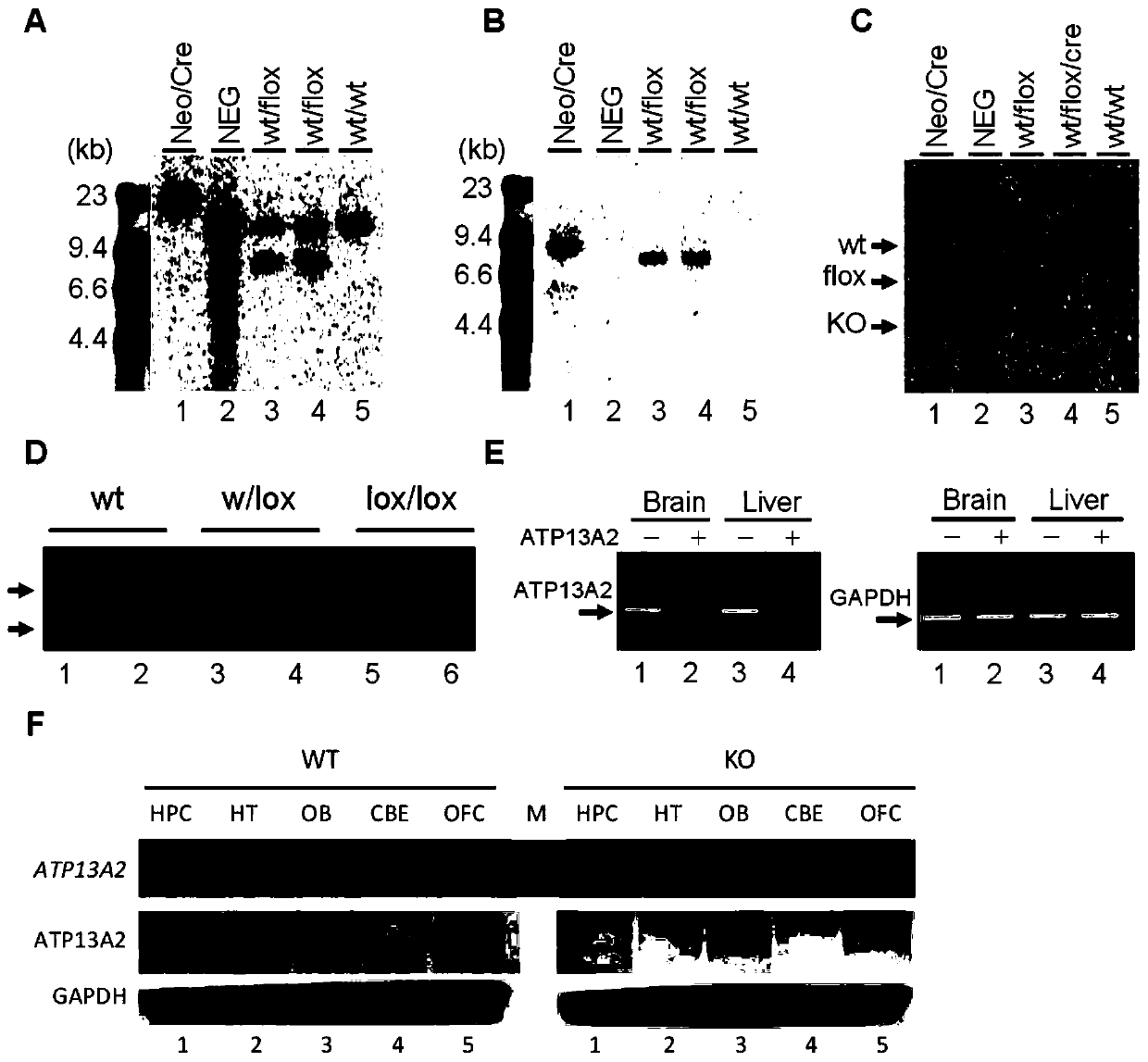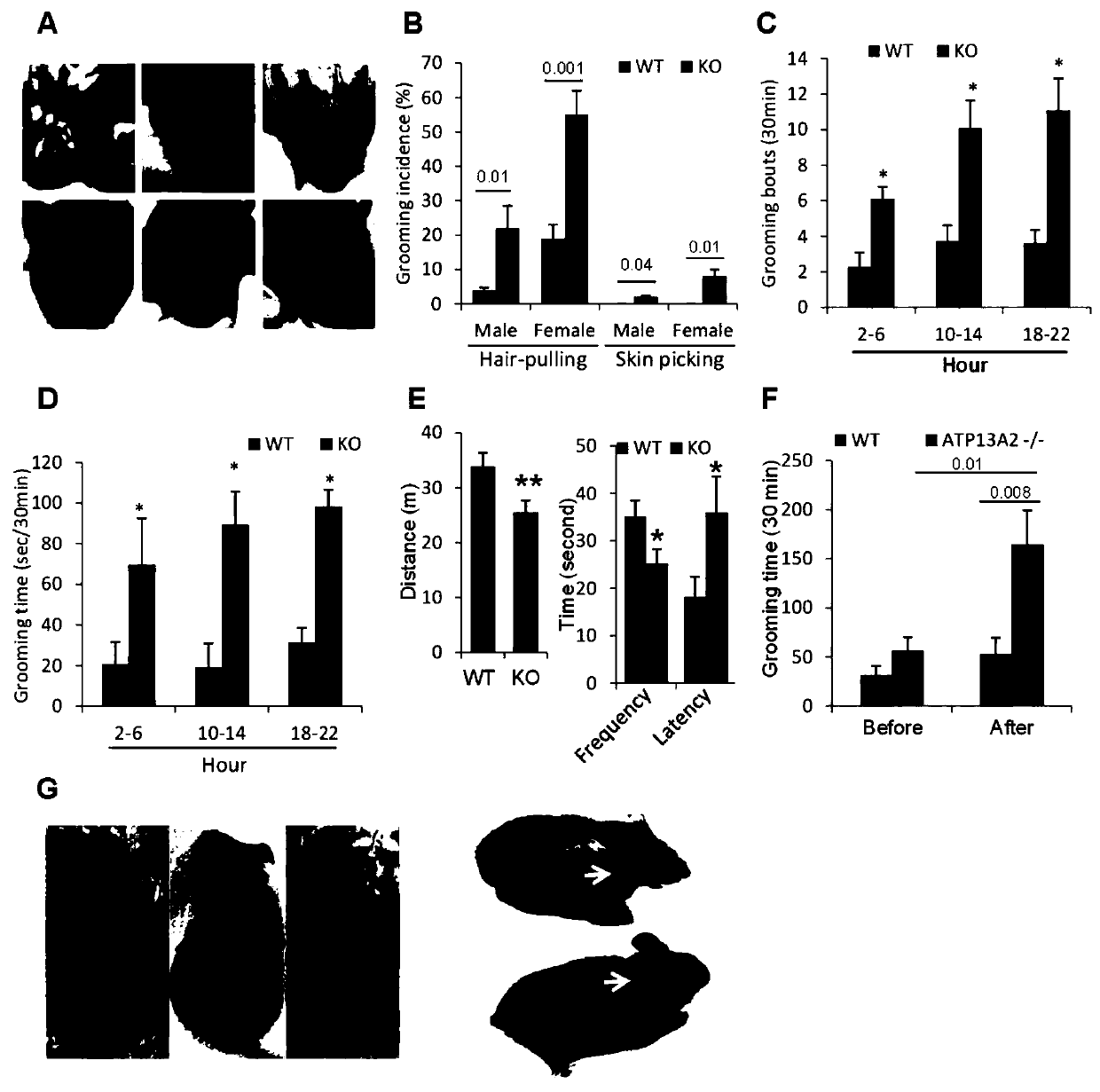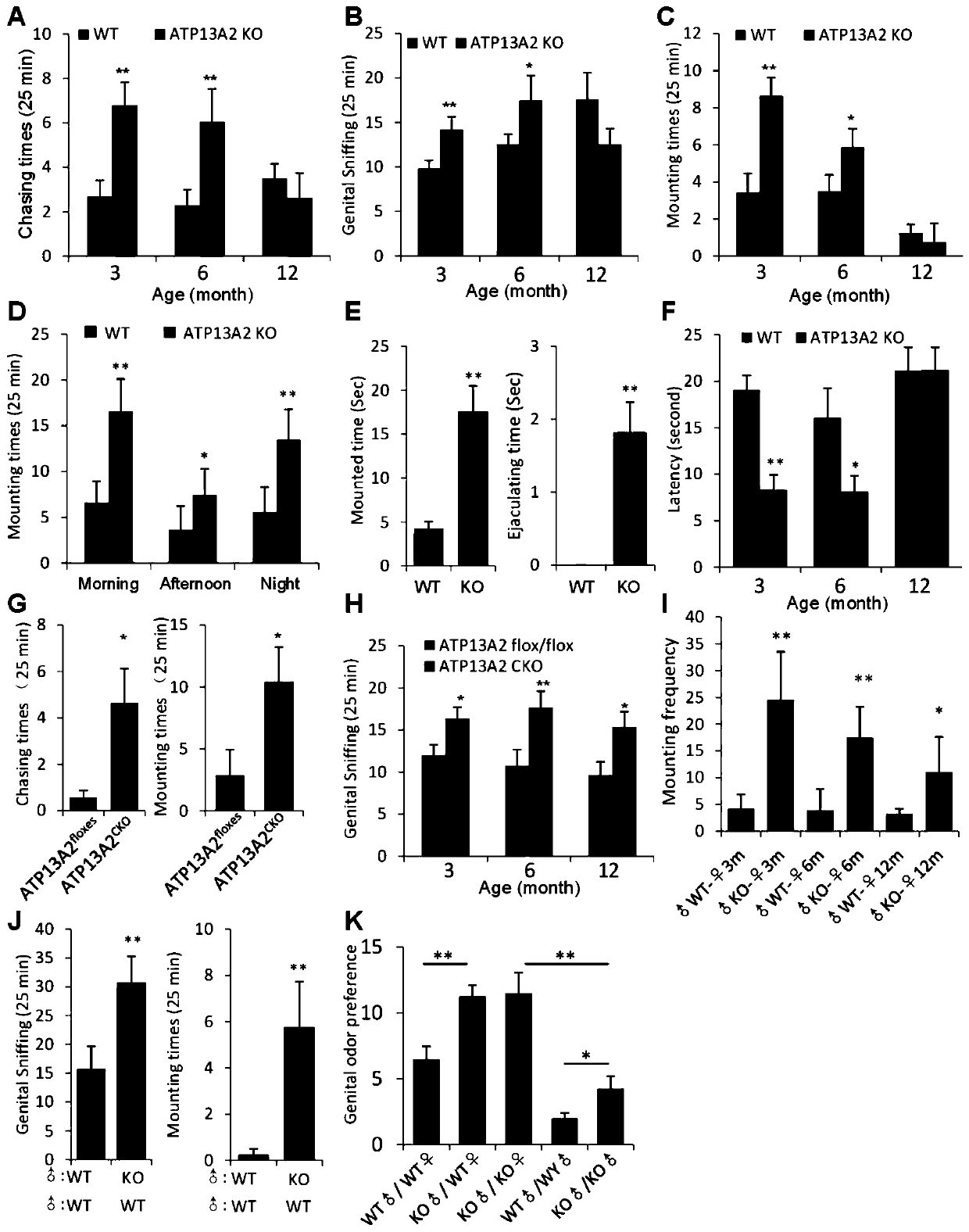Application of compound FTY720 to preparation of detection markers for treating behavior abnormality and motion abnormality
A technology of FTY720, abnormal motion, applied in the fields of biochemical equipment and methods, microbial determination/inspection, measurement devices, etc., can solve the problem of undetermined specific substrate ligands and so on
- Summary
- Abstract
- Description
- Claims
- Application Information
AI Technical Summary
Problems solved by technology
Method used
Image
Examples
Embodiment 1
[0026] Example 1 ATP13A2 mutation and / or decreased sphingomyelin and increased ceramide and lysosomal phosphatidylethanolamine in serum are biomarkers of anxiety, abnormal behavior, and movement, especially impulse control disorders such as hair pulling and skin peeling, papules Markers for Kinson's disease, Kufor-Rakeb dementia, hereditary spastic paraplegia (SPG), and neuronal ceroid lipofuscinosis (NCL):
[0027] Experimental subjects: wild-type and ATP13A2 gene mutant C57BL / 6 experimental mice
[0028] Experimental approach: Systemic or neuron-specific expression of cre recombinase-mediated gene knockout, behavioral and serum lipidomics. From the mouse 129Sv / J genomic DNA sequence, a DNA fragment with two ends of homologous recombination and LoxP-Exon 2-Exon3-FRT-Neo Cassette-FRT–LoxP and two ends used for homologous recombination was generated by PCR, and the vector was passed through electroporation Transfection inserted into W9.5 passage 28 embryonic stem (ES) cells ob...
Embodiment 2
[0030] Example 2 ATP13A2 mutation and / or decreased serum sphingomyelin and increased ceramide and lysosomal phosphatidylethanolamine are markers of mammalian male impulse control abnormalities such as mating hyperactivity and same-sex mating
[0031] Experimental subjects: wild-type and ATP13A2 gene mutant C57BL / 6 experimental mice.
[0032] Experimental method: Systemic or neuron-specific expression of cre recombinase-mediated gene knockout, behavioral and serum lipidomics detection. The behavioral phenotypes of animals are observed through real-time video, statistics at different time periods, and statistical comparison analysis to obtain significant difference conclusions.
[0033] The results showed that the loss of ATP13A2 function caused impaired mating impulse control, frequent abnormal impulses and mating behaviors in mice, especially in young or young male animals. The specific manifestation is that the genetic mutant animals frequently chase, smell, and forcefully m...
Embodiment 3
[0034] Example 3 ATP13A2 deficiency or dysfunction, and / or decreased serum sphingomyelin, increased ceramide and lysosomal phosphatidylethanolamine, are biomarkers of mammalian aging and related neurodegenerative diseases, especially Parkinson's disease, Markers of ataxia, paralysis in Kufor-Rakeb dementia, hereditary spastic paraplegia (SPG), and neuronal ceroid lipofuscinosis (NCL):
[0035] Experimental subjects: wild-type and ATP13A2 gene mutant C57BL / 6 experimental mice.
[0036] Experimental method: Systemic or neuron-specific expression of cre recombinase-mediated gene knockout, behavioral and serum lipidomics detection. The behavioral phenotypes of animals are observed through real-time video, statistics at different time periods, and statistical comparison analysis to obtain significant difference conclusions.
[0037] The results showed that loss of ATP13A2 function caused motor coordination dysfunction and paralysis that gradually aggravated with age in mice, espec...
PUM
 Login to View More
Login to View More Abstract
Description
Claims
Application Information
 Login to View More
Login to View More - R&D
- Intellectual Property
- Life Sciences
- Materials
- Tech Scout
- Unparalleled Data Quality
- Higher Quality Content
- 60% Fewer Hallucinations
Browse by: Latest US Patents, China's latest patents, Technical Efficacy Thesaurus, Application Domain, Technology Topic, Popular Technical Reports.
© 2025 PatSnap. All rights reserved.Legal|Privacy policy|Modern Slavery Act Transparency Statement|Sitemap|About US| Contact US: help@patsnap.com



